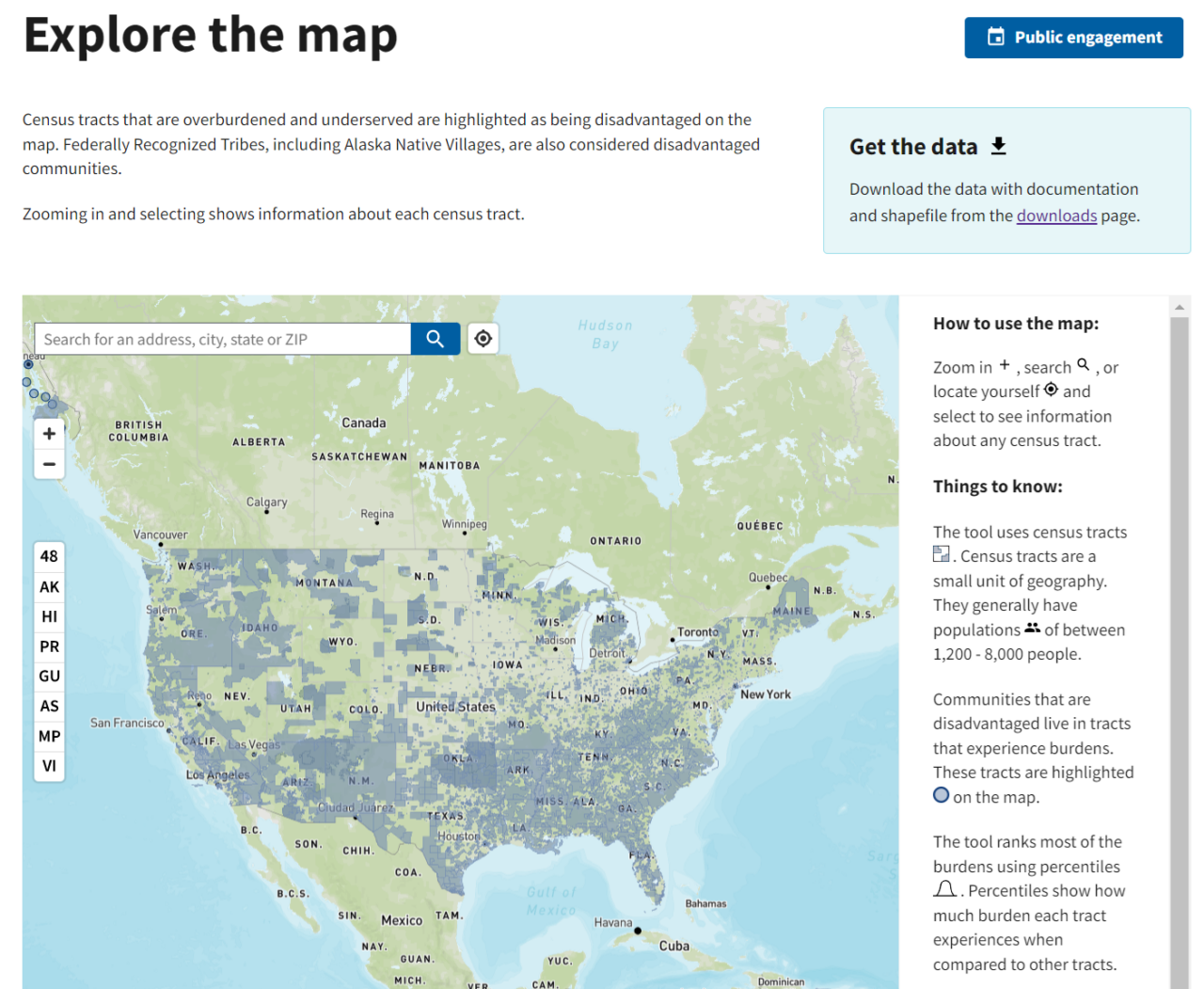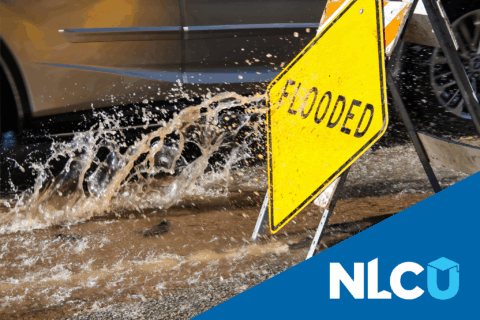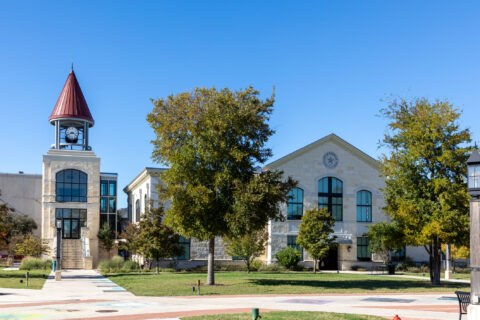Municipalities should be excited and encouraged to explore new and updated data tools to help local leaders develop and implement innovative policies. Instead of needing to shore up expensive data teams and networks, cities, towns and villages can leverage new national tools that continue to come online every year. These national databases can help local leaders measure disparities between and within cities to craft tailored policies to alleviate inequities. National databases with municipal-level data are an invaluable resource as local leaders apply for federal funding from the Bipartisan Infrastructure Law (BIL) and the Inflation Reduction Act (IRA). Many of the programs funded under these laws require award winners to use data in their applications and assess how that data reveals inequities or injustices within a community.
With so much new federal funding available to transform America’s municipalities, it is crucial for resources to go to underserved communities that have not received federal funding that is necessary to address systemic issues in their communities. The Biden administration’s Justice 40 initiative helps to ensure 40 percent of funds in areas like climate and clean energy reach disadvantaged communities. To effectively implement this initiative, the Council on Environmental Quality released an updated version of the Climate and Economic Justice Screening Tool (CEJST) in November 2022. This valuable new resource will be leveraged not only by the federal government in implementing national policy but also contains local data available for local leaders to advance their own goals and equity initiatives and, when used with other national, state, and local data sets, enable them to apply for BIL and IRA grants. CEJST will be the primary tool that the federal agencies use to determine which communities are considered disadvantaged communities for the purposes of directing federal funds under the Justice40 initiative.

National Environmental Justice Data Tools
While the new version of CEJST largely uses the same methods as its predecessor to identify disadvantaged communities, it now includes new data sources, including data on historic underinvestment due to redlining, a practice that has resulted in longstanding and racialized economic inequality, and flood and wildfire risks. These two weather events exacerbated by climate change are expected to disproportionately endanger under-resourced communities.
CEJST adds to a growing universe of environmental justice data tools that combine environmental, socioeconomic, and other information to assist policymakers and other users with environmental justice-centered decision-making. The Urban Institute published an interactive table comparing more than 30 federal, state and local-level environmental justice data tools, as well as a report that outlines limitations and opportunities for future investment in new and existing tools. These resources provide valuable data sources, along with examples of how municipalities can begin to think about prioritizing and classifying communities that stand to benefit most from equitable investment. They can also help cities understand tradeoffs among different state- and local-level tools, as well as comparative strengths and weaknesses of their own tools and resources. They can also help cities understand tradeoffs among different state- and local-level tools, as well as comparative strengths and weaknesses of their own tools and resources.
Power of Local Disaggregated Data
Cities, towns and villages are uniquely suited to complement existing environmental justice data tools with local, contextualized data that better represents community members’ interests and leads to successful bids for competitive funding. National tools like CEJST have excluded data sets reflecting salient environmental justice issues like coal ash pollution and unsafe drinking water because the data sets in question were insufficiently granular and relied on out-of-date measurements. Localities should consider utilizing local-level data, which can reveal environmental and other burdens that aren’t adequately depicted on a national scale. This data might already be available from third-party organizations or state governments; for example, Michigan’s MiEJScreen tool includes information on blood lead levels in children using data reported to the Michigan Department of Health and Human Services.
Race and ethnicity-related information are crucial data for municipalities, given that many present-day environmental, economic and health disparities are produced over decades by structural racism. As the federal government has acknowledged, race-disaggregated data can play a role in addressing these disparities. However, many data tools covering topics such as housing, mobility, employment and safety are not disaggregated by race. Some higher-capacity organizations address these issues by collecting their own race-disaggregated data. For example, Bay Area Rapid Transit administers ridership surveys to better understand how public transit usage and reliance vary by demographic composition. Even in the absence of disaggregated data, breaking down racial and ethnic identities beyond “minority” or “person of color” is helpful to better understand and address how different subgroups are affected by a given policy or issue.
Practicing Local Data Storytelling
In addition to identifying local-level quantitative data, municipalities should also practice data storytelling in conversation with residents. Cities, towns and villages are particularly well positioned to “ground truth” their data by partnering with environmental justice-centered and other community-based organizations to ensure that insights from their data tools reflect the lived realities of residents. These local organizations can help ensure that funding suits community interests and needs. For example, Near East Area Renewal in Indianapolis organized regular community meetings to reach a consensus over a desired brownfield redevelopment site. Localities can also implement other robust community engagement practices, such as engaging in data walks to share information with residents and utilizing data chats that emphasize the importance of lived experience.
Municipalities can successfully advance equity and secure federal funding by telling stories with their data. As successful applicants for BIL and IRA funding increasingly use data to document how projects will affect underserved communities, environmental justice and other data tools can support successful applications. For cities, towns and villages looking for further guidance on data storytelling, Urban Institute researchers published a data guide with datasets, tools, and indicators that can be used to make data- and equity-centric arguments in pursuit of federal transportation funding, as well as key BIL priorities that these resources can be mapped to.
Join Us
The National League of Cities Congressional City Conference (CCC) brings local leaders voices to Washington, D.C. and provides them with the necessary tools and connections to help build a brighter future for our nation’s cities, towns and villages. Join us in March 26-28, 2023, in Washington, D.C. at the Marriott Marquis to add your voice. Don’t forget about our pre-conference activities on March 24-25 and Hill Day on March 28.
Written in collaboration with Judah Axelrod, a senior data scientist at the Urban Institute, and Chitra Balakrishnan, a research analyst in the Office of Race and Equity Research at the Urban Institute.










